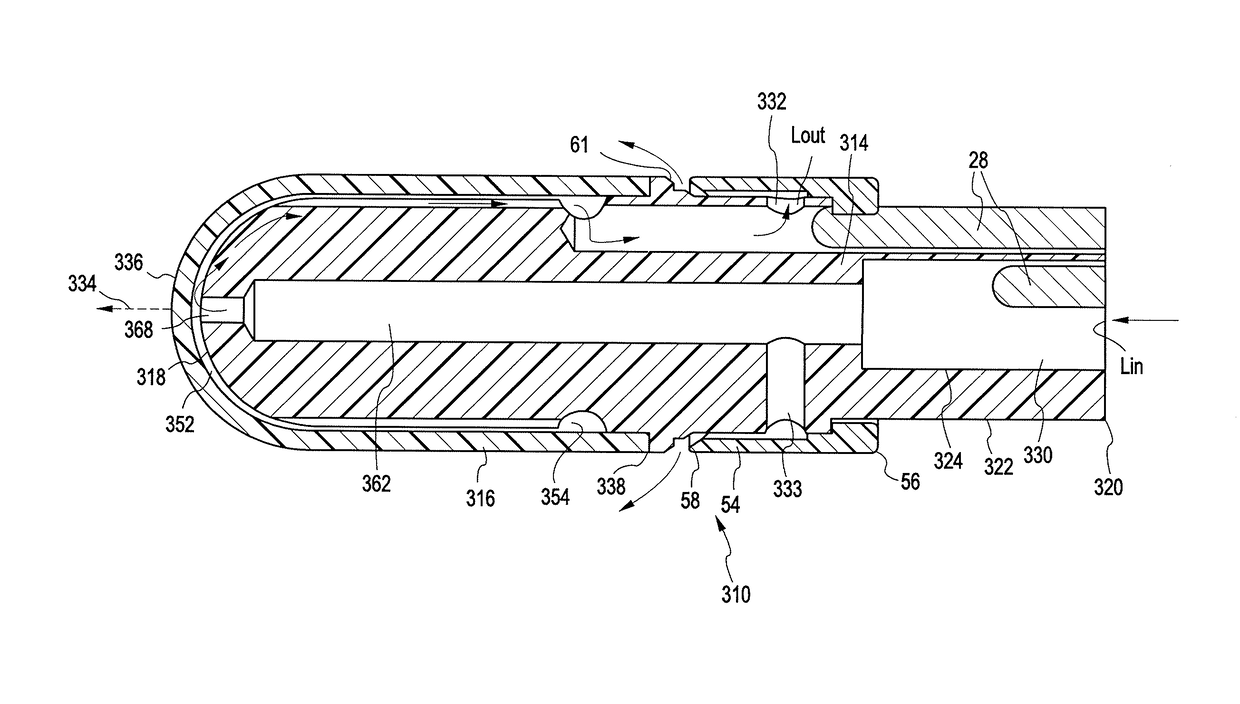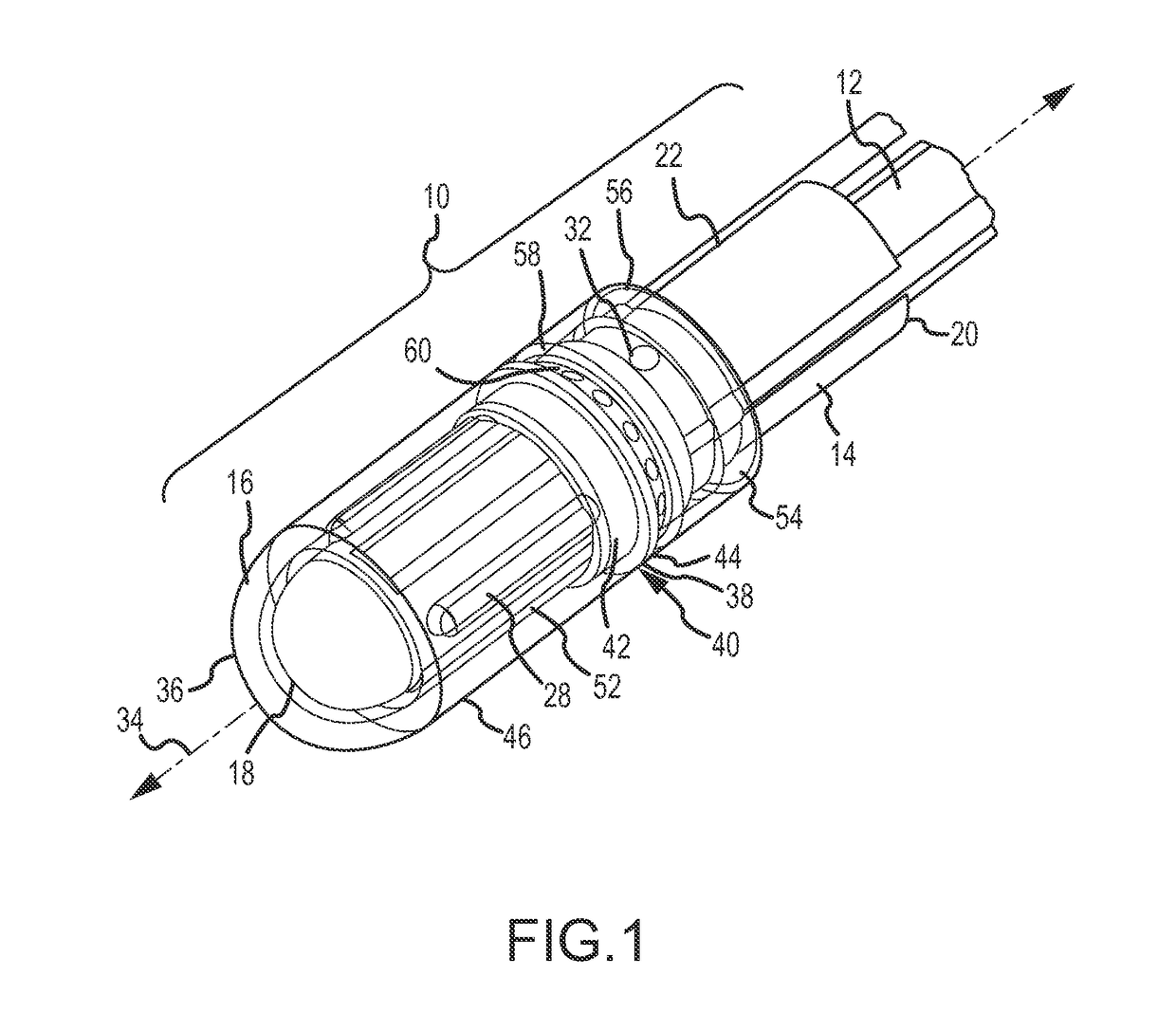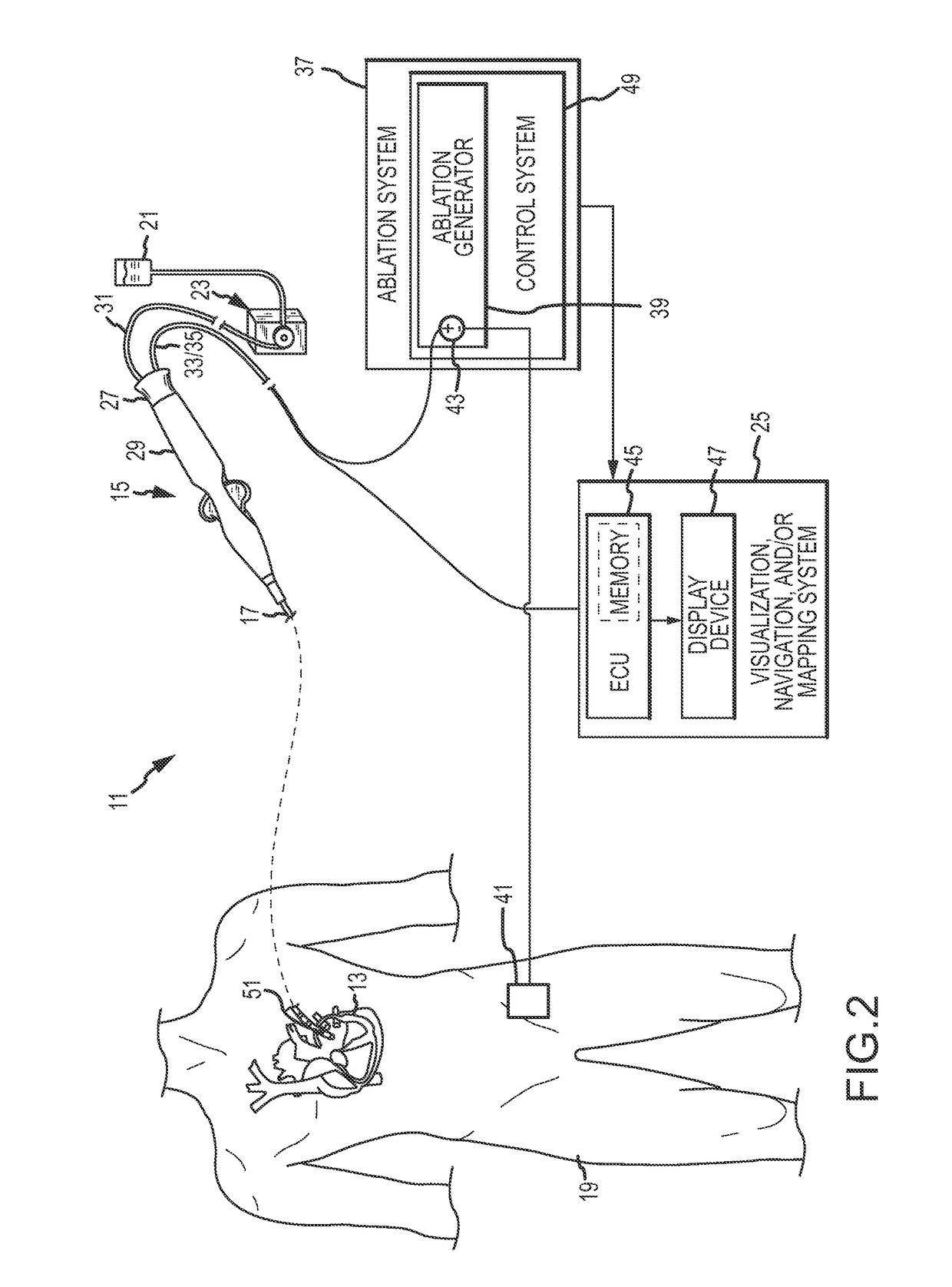Ablation electrode assemblies and methods for using same
a technology of electrodes and electrodes, applied in the field of ablation electrode assemblies, can solve the problems of reducing affecting the efficiency of the process, so as to reduce the heat transfer path, mitigate the effect of temperature gradient, and mitigate the effect of orientation
- Summary
- Abstract
- Description
- Claims
- Application Information
AI Technical Summary
Benefits of technology
Problems solved by technology
Method used
Image
Examples
Embodiment Construction
[0034]The instant disclosure generally relates to irrigated ablation electrode assemblies. For purposes of this description, similar aspects among the various embodiments described herein will be referred to by similar reference numbers. As will be appreciated, however, the structure of the various aspects can be different among the various embodiments.
[0035]An embodiment of an ablation electrode assembly 10 is generally shown in FIG. 1. Referring now to FIG. 2, the ablation electrode assembly 10 can comprise part of an irrigated catheter system 11 for examination, diagnosis, and / or treatment of internal body tissues (e.g., targeted tissue areas 13). In an exemplary embodiment, the irrigated catheter assembly can comprise an ablation catheter 15 (e.g., radio frequency (RF), cryoablation, ultrasound, etc.). The instant disclosure generally refers to RF ablation electrodes and electrode assemblies, but it is contemplated that the instant disclosure is equally applicable to any number ...
PUM
 Login to View More
Login to View More Abstract
Description
Claims
Application Information
 Login to View More
Login to View More - R&D
- Intellectual Property
- Life Sciences
- Materials
- Tech Scout
- Unparalleled Data Quality
- Higher Quality Content
- 60% Fewer Hallucinations
Browse by: Latest US Patents, China's latest patents, Technical Efficacy Thesaurus, Application Domain, Technology Topic, Popular Technical Reports.
© 2025 PatSnap. All rights reserved.Legal|Privacy policy|Modern Slavery Act Transparency Statement|Sitemap|About US| Contact US: help@patsnap.com



